Olympus OM-D E-M5 Mark III Review
Olympus OM-D E-M5 Mark III Introduction
The Olympus OM-D E-M5 Mark III incorporates the imaging pipeline of the previous generation flagship E-M1 Mark II reviewed here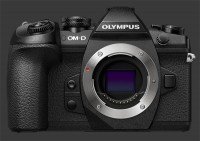
Olympus OM-D E-M1 Mark II into the most compact weatherproof mirrorless body ever. Its 20 MP Four-Thirds CMOS sensor is capable of delivering full-resolution images at 30 FPS when using an Electronic-Shutter that can freeze action at 1/32000s. A compact Mechanical-Shutter manages to sustain 10 FPS for an unlimited number of JPEG images or 152 RAW files. It supports 1/8000 to 60s shutter-speeds, plus Bulb exposures up to 3 hours.
A newly revised image-stabilization mechanism in this mirrorless compensates for 5½-stops of camera shake while keep the camera exceptionally light and compact. This provides a ½-stop improvement over its predecessor. To distinguish itself more from the much more expensive OM-D E-M1 Mark III
Olympus OM-D E-M1 Mark II, Olympus repositioned the E-M5 Mark III slightly to emphasize its smaller size and reduced the size of the EVF. The new EVF offers a medium 0.69X magnification, compared to a large 0.74X on the Mark II. The 2.4 MP resolution remains the same and the E-M5 Mark III also keeps the 100% coverage and Eye-Start Sensor.
Amazingly for its compact size, the Olympus OM-D E-M5 Mark III provides a complete professional feature-set. This includes a weatherproof and freezeproof construction, the already mentioned EVF with essential Eye-Start Sensor, dual control-dials, a traditional mode dial and plenty of external controls. A direct ISO button was added to the Mark III, plus options to control ISO using a dial which renders the camera much more efficient than its predecessor.
Olympus cameras are always incredibly feature-rich and the E-M5 Mark III includes many of their unique features such as Live-Bulb, Live-Time, Live-Composite, Highlight Metering and more. The image-stabilization mechanism is also used to produce 50 MP Super-Resolution images. This camera is highly capable when it comes to video. It is among the smallest to support Cinema 4K video capture at 24 FPS, in additional to 4K Ultra-HD at 30 FPS and 1080p at 120 FPS.
This digital camera review covers the usability, performance and image quality of the Olympus O-MD E-M5 Mark III.
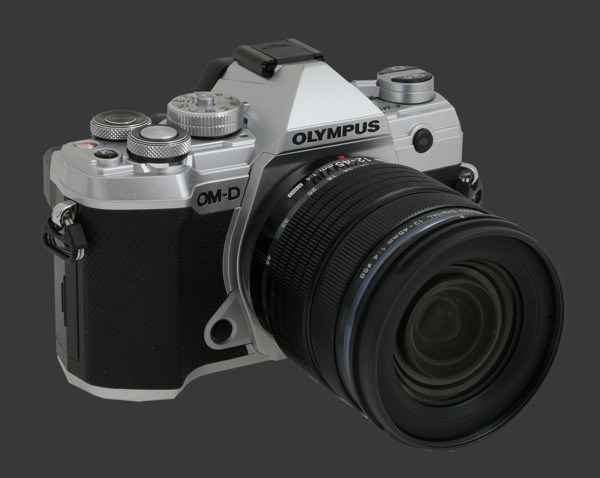
Olympus OM-D E-M5 Mark III Features
Sensor
- 20 Megapixels CMOS Four-Thirds sensor
- Anti-Alias Filter
- Sensor-Shift Image Stabilization:
- 5-Axis
- 5½-stops Compensation
- 50 MP Supper-Resolution:
- ISO 64-1600 Sensitivity-Range
- Micro Four-Thirds mount
- Ultra-Sonic dust-reduction
Exposure
- Standard ISO 200 - 25600 sensitivity range
- Expanded Low ISO 64 sensitivity
- Auto ISO, customizable ISO 200 - 25600 limit
- ISO Bracketing, 3 frames, maximum 1 EV steps
- PASM Exposure modes
- Program-Shift in P mode
- Hybrid Shutter-Mechanism:
- 1/8000s Max Mechanical Shutter-Speed
- 1/32000s Max Electronic Shutter-Speed
- 60s Minimum Shutter-Speed
- 3h Bulb Exposures
- 1/3, 1/2 or 1 EV steps
- EC, ±5, 1/3, 1/2 or 1 EV increments
- Exposure-Shift, ±1, 1/6 EV increments
- Multi-Segment, Center-Weighed, Spot, Highlight and Shadow metering
- Auto-Exposure Bracketing, 3, 5 or 7 frames, max 1 EV steps except 1/2 EV for 7 frames
- Flash Bracketing, 3 frames, max 1 EV steps
- Wireless Flash Remote-Control
Image Parameters
- AutomaticTwo types: Normal and Warm-preserving., 7 presetsSunny, Shade, Cloudy, Incandescent, Fluorescent, Underwater, Flash, Kelvin and 4 custom white-balance
- White-balance fine-tuning along 2 axis in 15 steps
- Digital white-balance preview
- White-balance bracketing, 1 or 2 axis, 3 frames along each axis, 3 step sizes
- Optional One-Touch custom white-balance
- Optional Long-Shutter noise-reduction
- Optional High-ISO noise-reduction, 3 levels
- 5 Color and 1 B&W Picture Modes
- Adjustable contrast, sharpness, saturation, 5 steps each
- Adjustable gradation, automatic or 3 levels
- Adjustable Tone Curve, 15 steps for shadows, mid tones and highlights
- sRGB or Adobe RGB color space
Focus
- 121-Point On-Sensor Phase-Detect AF
- Autofocus: Single-shot (AF-S), Continuous (AF-C), DMF, Continuous Tracking
- Manual Focus: Standard and Preset
- Optional MF-Assist, 14X magnification
- Optional focusing during Bulb exposure
- Optionally reset lens focus to infinity
- Controllable focus-ring direction
- Optional AF-Assist lamp
Drive
- Silent 30 FPS, 23 RAW files or 26 JPEG images
- Mechanical 10 FPS, 152 RAW or Unlimited JPEG
- Multiple-Exposure, 2 frames, optional automatic gain and overlay
- Interval Timer:
- Frames: 1-999
- Interval: 1s - 24h59m59s
- Start Delay: 0 - 24h59m59s
- Time-Lapse: 4K, 1080p, 720p
- Self-timers: 2s, 12s or Custom, 1-10 Frames, 1-30s Delay, ½s-3s Interval
- Shutter-Delay: 0, 1/8, 1/4, 1/2, 1, 2, 4, 8, 15. 30s
- Quiet Modes: Single, Continuous, Self-Timers
Video
- 4096x2160 @ 24 FPS
- 3840x2160 @ 30 FPS
- 1920x1080 @ 120 FPS
- Quicktime H.264 Codec
- PASM Exposure Modes
- 96kHz 24-bit or 48kHz 16-bit Audio
- Audio-Volume, 21 levels
- Built-in Stereo Microphone
- Stereo Sound Input Mini-Jack
- Optional Audio
- Optional Volume-Limiter
- Optional Wind-Filter, 3 levels
- Optional Art-Filters
- Built-in Time-Code
Display & Viewfinder
- Built-in 0.5" EVF:
- 2.4 Megapixels
- 0.69X Magnification
- 100% Coverage
- Built-in Eye-Start sensor
- Optional OVF Simulation
- Digital-level, 2-Axis
- Rotating 3" Touchscreen LCD, 1 Megapixel
- Adjustable brightness, 15 steps
- Adjustable color, 15 steps, 1 axis
- Optional Live-Histogram
- Optional Framing-Guides, 6 types
- Optional Blinking-Highlights
- Optional Focus-Peaking
Controls
- Dual control-dials
- Direct ISO Button
- Lockable Exposure Mode-Dial
- 7 Customizable buttons
- 2 Customizable directions on 4-way controller
- Customizable AE-L/AF-L button
Output Processing
- 4:3 Native aspect ratio
- 3:2, 16:9, 1:1 and 3:4 cropped aspect ratios
- 12, 8, 5, 3, 2 and 1.2 megapixels modes
- JPEG, RAW, RAW+JPEG capture
- 3 JPEG Compression levels
- Built-in HDR, ISO 200 only, 2 modes
- Focus-Stacking, 8 Frames max
- Optional Vignetting Correction
- Optional Keystone Compensation
- Optional Fisheye Compensation
Connectivity
- Standard Hot-Shoe
- Wired Remote port
- Bluetooth 4.2 LE
- Built-in WiFi
- 4K HDMI
- Micro-USB 2.0
Misc
- Weatherproof
- Freezeproof to -10C
- SDXC memory-card slot
- Proprietary Lithium-Ion battery
- Internal Charging
- Copyright data
Olympus OM-D E-M5 Mark III Capability - What can it do?
For its compact size, this digital camera offers a truly impressive amount of features. The Olympus OM-D E-M5 Mark III offers every feature required by professional photographers and videographers, One gets a full complement of manual controls, including choice of metering patterns, fine control over white-balance and autofocus behavior. The 121-Point Phase-Detect AF system in this camera covers a wide area of the frame and is capable of tracking moving subjects, faces or eyes.
The 20 MP Four-Thirds CMOS sensor inside the E-M5 Mark III is capable of producing highly detailed images at most common print sizes. An Anti-Alias Filter mounted on the sensor reduces moire while also removing a tiny amount of critical sharpness. This is why the same sensor performs slightly better on the E-M1 that omits the low-pass filter. Expect the limit of this sensor to be a 20" x 15" print.
A state-of-the-art image-stabilization system in this mirrorless compensate for movements along 5 axis with up to 5½ stops of efficiency. This lets the E-M5 Mark III partially compensate for having the smallest sensor still in use among mirrorless cameras. This camera supports a really wide exposure range with shutter-speeds from 1/32000s to 60s, plus up to 3 hours of Bulb exposures, combined with a standard ISO 200-25600 sensitivity range which expands down to ISO 64, although it strangely skips ISO 100. This is sufficient to freeze fast action and take photos of star trails. Olympus' unique Live-Bulb and Live-Time modes that makes it possible to see an exposure progress as it is captured. This makes it possible to photograph star-trails and is immensely useful when taking pictures of fireworks and light painting when exposure is impossible to predict.

Extremely large prints are possible using Super-Resolution mode which produces a 50 megapixels image from 8 separate exposures with the sensor shifted in-between. This is available from ISO 100 to 1600 and results in lower image-noise due to averaging of pixels. Any motion in the scene will cause problems though and the process is quite slow. Look at the comparative crops page to see the results.
The E-M5 Mark III offers a long list of bracketing modes to capture variants when uncertain. AEB can grab 3 or 5 frames with 1 EV increments or 7 frames with ½ EV steps. Focus Bracketing can capture an incredible 999 frames with 10 possible increment sizes. Bracketing of ISO, WB, Flash and Art Filters is also possible. The HDR feature can automatically perform Exposure Fusion in-camera or capture a bracket to process later.
Trigonally reserved for expensive Action Photography cameras, high-speed sequential shooting is becoming more accessible with modern technology. The new E-M5 Mark III manages to capture 30 FPS bursts completely silently without any EVF blackout using the ultra-high-speed sensor introduces in the E-M1 Mark II. Having this level of speed on such a small camera is game-changing. The throughput of the TruePic VIII processor in this camera allows for peak action to be captured using pre-buffering and a relatively deep buffer.
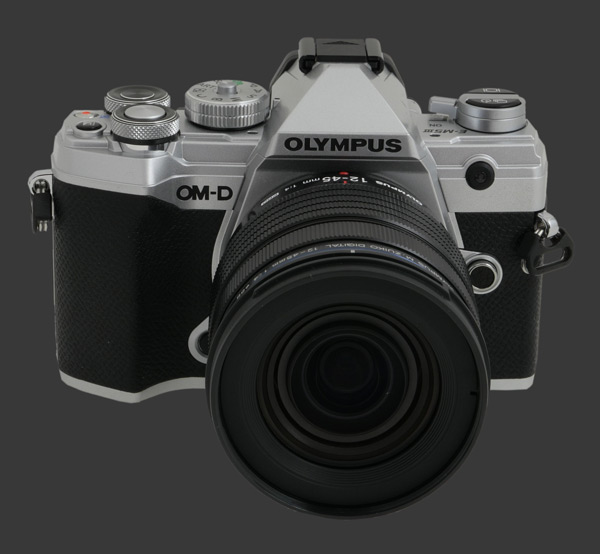
Supporting this exceptional speed is a 121-Point hybrid autofocus system that combines Phase-Detect and Contrast-Detect AF at all those points to focus extremely quickly and accurately. Since focusing is performed on-sensor, this digital camera offers a large number of focusing aids: Focus Assist, Focus Check and Focus Peeking. Autofocus is extremely flexible with Direct Manual Focus, Tracking AF and Face-Priority AF available.
The Olympus OM-D E-M1 Mark II has quite possibly the longest list of Drive Modes available on any camera. The usual Single-Shot, Continuous and Self-Timers are all there, plus Interval Timer and Multiple Exposure. All modes are even customizable with Quiet and Anti-Shock versions These use an Electronic Front-Curtain Shutter (ECFS) or fully Electronic Shutter to reduce camera shake and noise, respectively. There is a highly customizable Self-Timer. Continuous shooting modes have pages of options in the Settings menu to control speed, shutter-type and pre-buffering in the case of Pro Capture mode.
To stay small, this mirrorless does not have a built-in flash but it can use lighting via a standard hot-shoe. An on-camera flash can be used as Wireless Commander for remote and multi-flash setups. There are many ways to connect to the Olympus OM-D E-M5 Mark III: Wired remote, Bluetooth and WiFi, each allowing more control than the previous.
Olympus OM-D E-M5 Mark III Ergonomics - How easy is it to handle?
Olympus scaled down the basic design of their OM-D series to make the E-M5 Mark III impressively compact. Its mostly rectangular body has rounded corners on sides and steep angles on the top plate with a small yet pointy viewfinder hump. The heavily angles sides of the viewfinder hump converge into minimal space to accommodate a standard hot-shoe. A small grip provides a place for fingers to hold onto the camera.
Compensating for the minimal hold afforded by its small grip, a hard plastic protrusion at the back of the camera serves as thumb hook. There are eyelets on either side to attach a standard neck-strap. Too bad one digs uncomfortably into your index finger while reaching for the shutter-release though. Considering how light and relatively compact this mirrorless digital camera is, it can be used with a hand or wrist-strap instead. This camera feels solid all-around and even the rotating hinge for the rear LCD is remarkably sturdy. Olympus managed to make the body weatherproof while staying relatively small.
The front of the camera has little round around the Micro Four-Thirds lens mount which has its lens-release on the left side of the camera. A small customizable button is squeezed between the grip and mount. By default, it serves to activate Depth-of-Field Preview but it can be assigned to an impressive 30 functions, several of which are not accessible without being assigned to a function button. Notable functions are One Touch White-Balance, Test Picture, Keystone Compensation, Fisheye Compensation, Magnification and, of course, DOF Preview.
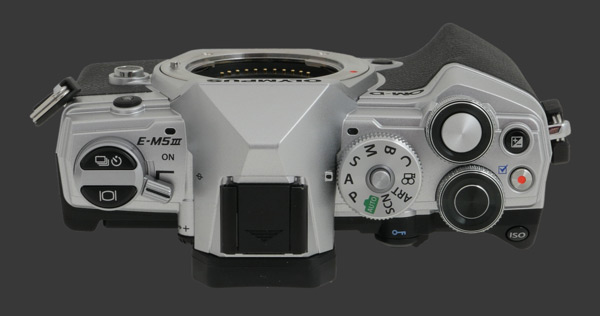
Controls on the top plate are packed, leaving a minimal space for the viewfinder hump which is centered with the optical axis the lens. These controls keep a retro look seen since the launch of the OM-D series. The left shoulder holds a rotating power-switch reminiscent of a film-winding lever. It is easy to rotate with a firm detent while being tucked between a pair of elevated buttons and the viewfinder makes it impossible to accidentally move. Two semi-circular buttons are customizable to the same 30 functions as the one on the front of the camera. By default, one brings up a long list of drive modes, while the other cycles over display modes.
Jumping over the viewfinder, there is a lockable Mode Dial with all the standard PASM modes, plus a dedicated position for Bulb. This one allows the use of Live-Bulb, Live-Time and Live-Composite modes. The former two create a single long exposures up to 30 mins, while the latter accumulated multiple exposures for up to 3 hours to simulate an extremely long shutter-speed while reducing changes for pixels to saturate. There is also a Custom mode, a dedicated Video mode, an Art Filter mode and a position which groups all Scene modes.
Dual control-dials are found to the right of the Mode Dial. All these dials have strong detents and a nice texture for grip. At the center of the front control-dial, there is a standard two-stage shutter-release. It has very short travel with a firm halfway point which minimized accidental shots. The control-dials are extremely customizable and allow the camera to be among the most efficient. In all modes, they can control different exposure parameters, leaving only Manual mode to actually need the dedicated ISO button that is found on the extreme corner of the top plate.
Two tiny and somewhat uncomfortable to reach buttons are squeezed between the control-dials and right edge of the camera. One is for EC which operates both modally and modelessly. When it is released after rotating a dial, Exposure Compensation completes normally. Otherwise, the camera is left in a mode to set Exposure-Compensation which often leads to accidental changes in exposure because it changes what the control-dials and 4-way controller do. This is annoying because if one decides not to apply EC, it is necessary to press the button again to get back to norma.
The other button which is the hardest to reach of all defaults to Video Record. It thankfully can be reassigned since it is useless outside of Video mode and redundant otherwise. Given that Four-Thirds sensors have a 4:3 aspect-ratio and video is shot at 16:9 or 17:9, the camera naturally only previews the correct framing from video in Video mode.
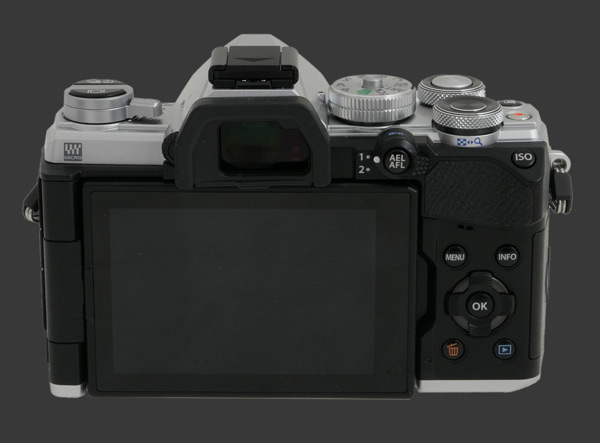
All remaining controls are found on the back of the camera. The compact size of the E-M5 Mark III limits space around the 3" LCD to little more than a small thumb-rest which makes it look rather busy. Since the LCD is hinged on the left, everything is squeezed on the right side of the camera. Only the AE-L/AF-L button with its surrounding lever is just above the right corner of the LCD. Olympus greatly simplified their 2x2 controls and now the level offers a choice of 3 functions instead of 6! It can either switch control-dial assignments, toggle between focus settings or switch between stills and video setup. The AE-L/AF-L button is actually customizable to 30 functions.
At the extreme corner of the camera back, the dedicated ISO button is visible, slanted to mostly face upward. Below the thumb hook, a now familiar cluster of 4 buttons surround a 4-way controller with central OK button. The Menu, Info, Delete and Playback buttons all work pretty much as expected. Info cycles over display modes which are configurable, both in Capture and Playback mode. Delete only works in Playback mode and does not perform any function during Instant Review. While many modes are available, one with full-width image and basic exposure parameters is missing.
There is a 4-way controller with central OK button. By default, directions simply move the focus-point. The OK button invokes the Quick-Menu, Super Control-Panel or both, depending on how the camera is configured. These are interactive ways to changing certain camera settings without using the menu system. The Super-Control Panel can set more options including WB Fine-Tuning and most Image Parameters. To operate it, the 4-way controller or rear control-dial selects an option and the front control-dial sets the amount.
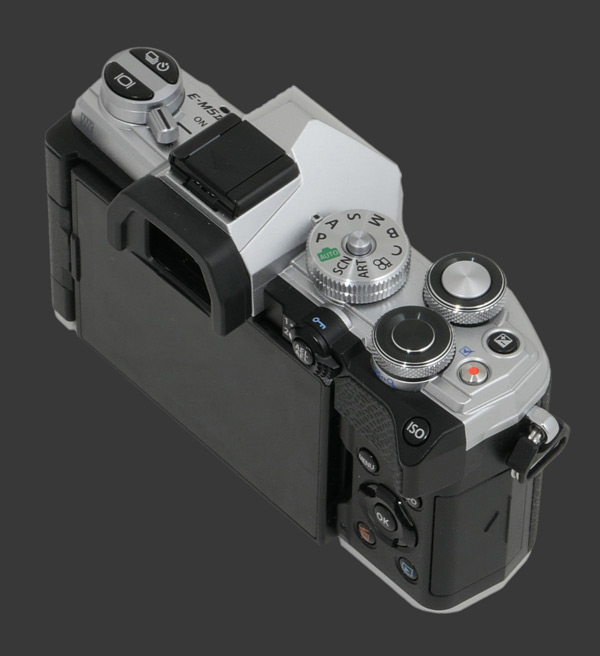
OM-D series cameras all feature a built-in EVF with Eye-Start Sensor. The medium-size unit on the E-M5 Mark III is quite nice, only with a slightly smaller view than on the Mark II. This 0.39" EVF offers a sharp 2.4 MP which shows a detailed view with enough precision to confirm focus. It shows 100% coverage at 0.68X magnification, which is typical for a compact mirrorless. This EVF has good color and contrast and manages to stay sufficiently bright in low-light. The view is Exposure-Priority in M mode and updates according to EC. It is not Exposure-Priority in A or S mode though.
The large rear 3" LCD has 1 megapixels and is sufficiently sharp to confirm focus without magnifying. Visibility is excellent and the anti-reflective coating does a fantastic job. Color temperature and brightness for the LCD can be set. Due to the limited contrast of the display, nuances in highlights are hard to see though. This LCD rotates which allows for shooting at odd angles but makes the camera more fragile and certainly more awkward to use for low and overhead shots. It is much more difficult to get the camera level when the LCD is extended out and away from the center of the lens.
The preview on the LCD is not Exposure-Priority, although it shows a good approximation in Manual exposure mode. In other modes, it shows the metered exposure offset by EC. The Live-Histogram is unfortunately based on display-brightness and is only reliable in M mode.
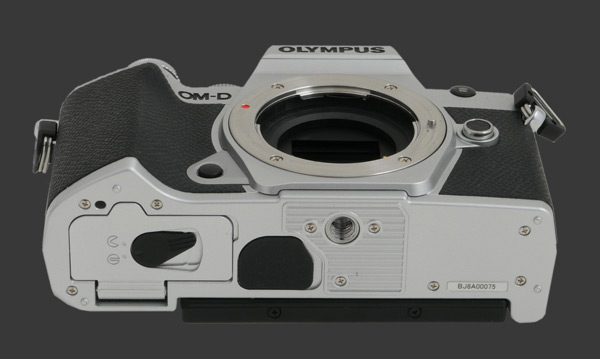
There are separate doors for memory and battery, making it easy to swap memory-cards while on a tripod. Both doors are quite sturdy. At the bottom of the E-M5 Mark III, there is a metal tripod socket, ideally for panoramic photography, is inline with the optical center of the lens.
Ergonomics of the Olympus OM-D E-M5 Mark III are quite reasonable.. The small size of this mirrorless digital camera makes some necessary compromises to tightly pack so many buttons. After customization, this camera can become efficient to use. Essential parameters are easy to control, particularly with the new customization available for the dual control-dials, and the Super Control Panel brings many settings closer. The main usability issue comes from the EC button and the way it affects other controls. Lastly, a minor issue is that the Eye-Start Sensor always reverts to Capture mode, regardless of what was shown before.
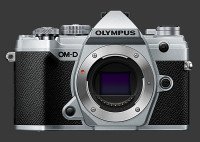 |
Please Support Neocamera
All information on Neocamera is provided free of charge yet running this website is a huge endeavor. Purchases made via affiliate links found throughout the site help keep it running and up-to-date. There is no additional cost to you, so please consider buying via these links to our affilates:
If you found any information on this site valuable and did not purchase via our affiliate links, please considering donating via PayPal:
Any amount will be greatly appreaciated. Thank you for your support!
Olympus E-M5 Mark III Highlights

Sensor-Size: 17 x 13mm

Actual size when viewed at 100 DPI
| 20 Megapixels Mirrorless | ISO 64-25600 |
| Micro Four-Thirds Mount 2X FLM | Shutter 1/32000-60s |
| 5-Axis Built-in Stabilization, 5.5-Stop Improvement | Full manual controls, including Manual Focus |
| 0.39" Built-in EVF 2.4 Megapixels (0.68X) | Custom white-balance with 2 axis fine-tuning |
| Automatic Eye-Start sensor | Spot-Metering |
| 2 Axis Digital Level | Hot-Shoe |
| Weatherproof down to -10C | Stereo audio input |
| Built-in Dust Reduction | Lithium-Ion Battery |
| 30 FPS Drive, 26 Images | Secure Digital Extended Capacity |
| 4096x2160 @ 24 FPS Video Recording | |
| 3" LCD 1 Megapixels |
Updates
2024.04.03

Fujifilm X-T5 Review
Newest Fujifilm flagship boasting a 40 MP APS-C sensor, 5-axis IBIS with 7-stop efficiency, 15 FPS continuous drive, 6.2K Video capture, dual control-dials and dual SDXC UHS-II slots in a sturdy weatherproof and freezeproof body.
2023.11.20

Best Digital Cameras of 2023
Find out which are the Best Digital Cameras of 2023. All the new Mirrorless Digital Cameras from entry-level to high-end professional.
2023.07.10

Fujifilm X-H2 Review
40 Megapixels APS-C Hybrid Mirrorless Digital Camera with 7-stop IBIS. Fastest shutter ever and 8K video capture. Large builtin EVF with 0.8X magnification and 5.8 MP, plus an Eye-Start Sensor. Packed with features and large number of controls in a weatherproof and freezeproof body.
2023.05.07

Sony FE 20-70mm F/4G Review
Review of the unique Sony FE 20-70mm F/4G lens. The optical zoom of this lens spans ultra-wide-angle and medium focal-length coverage, making it one of the most versatile Full-Frame lenses on the market.
2023.01.15

Huion Inspiroy Dial 2 Review
Review of the Huion Inspiroy Dial 2 tablet, a medium sized drawing surface with dual dials and customizable buttons. Connects via USB-C or Bluetooth 5.0 with Windows, Linux and Android support.
2022.12.08

How to Pack for a Photo Trip
Find out how to pack for a travel photography trip, carry your gear safely while meeting airline regulations.
2022.11.13

Best Digital Cameras of 2022
The best digital cameras of 2022. A short list of the most outstanding models in their respective categories. Choose one for yourself or as a gift.
2022.09.21

Pentax DA* 60-250mm F/4 SDM Review
Review of the Pentax DA* 60-250mm F/4 SDM, the constant-aperture telephoto zoom with the highest zoom-ratio on the market.
2022.09.20

Pentax DA* 50-135mm F/2.8 SDM Review
Review of the Pentax DA* 50-135mm F/2.8 SDM, the lightest professional telephoto zoom native to the K-mount.
2022.09.10

Pentax DA* 11-18mm F/2.8 DC AW Review
Review of the Pentax DA* 11-18mm F/2.8 DC AW, the widest professional ultra-wide zoom native to the K-mount.
2021.11.24

50 Gifts Under $50 For Photographers in 2021
50 Gifts photographers will love. All for under $50 USD. 2021 Edition.
2021.11.17

Best Digital Cameras for 2021
Neocamera shows which are the very best Digital Cameras for 2021 in every category: Mirrorless, DSLR, Premium Compact, Ultra-Zoom and Rugged.












